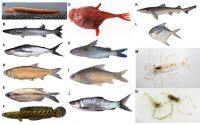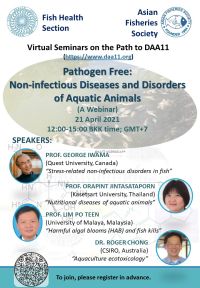The year 2021 is the one-hundredth anniversary of the birth of the ‘Father of Induced Fish Breeding in India’, the late Dr Hiralal Chaudhuri, DSc, former Senior Fishery Scientist at the ICAR-Central Inland Fisheries Research Institute, Barrackpore, India and Ex-Chief Technical Advisor in Aquaculture, FAO/UNDP at Lao PDR. In his honour, National Fish Farmers’ Day is celebrated annually on 10 July, to acknowledge the contribution made by professional fish farmers and breeders to India’s economy, food supply and production of table-sized major carps and other important inland food fishes.
Focussed explorations from the ICAR-National Bureau of Fish Genetic Resources (NBFGR), an organisation mandated for cataloguing of genetic resources of India include surveys of various ecosystems ranging from fauna of deep sea to the high-altitude regions of the Himalaya, falling under diverse biogeographic zones and unexplored regions of the country, including North-eastern India, Western Ghats, Lakshadweep and the Andaman and Nicobar Islands. This article describes the results of these efforts, which include discovery of 14 new fish species and six new distribution records between 2015 to 2020.
The Fish Health Section of the Asian Fisheries Society will convene a webinar via Zoom on 21 April, from 12:00 to 15:00 Bangkok time (GMT +7). Topics include: Stress-related non-infectious disorders in fish (Prof. George Iwama, Quest University, Canada); Nutritional diseases of aquatic animals (Prof. Orapint Jintasataporn, Kasetsart University, Thailand); Harmful algal blooms and fish kills (Prof. Lim Po Teen, University of Malaya); and Aquaculture ecotoxicology (Dr Roger Chong, CSIRO Australia). Participation is free, but registration is required.
In this issue:
Shrimp health: Online Consultation on Strategies for Hepatopancreatic Microsporidiosis caused by Enterocytozoon hepatopenaei (EHP); Webinar: Pathogen Free: Non-infectious Diseases and Disorders of Aquatic Animals; Quarterly Aquatic Animal Disease Report, July-September 2020; Register for the Global Conference on Aquaculture Millennium +20; Scholarship opportunity: Lancang-Mekong Rice-Fish Programme; International Artemia Aquaculture Consortium.
Presenters who identify themselves as youth (< 35 years) as part of their registration in the Global Conference on Aquaculture Millennium +20 will automatically be entered into a poster competition. Winners have a chance of receiving travel funding (please note the availability of this award will depend on the realities of global travel in September). Winners will also receive an opportunity to present a “lightening presentation” during a plenary session on the last day. This is an opportunity for young researchers to present to a large audience. Winners will also be invited to prepare a brief article for the FAO Aquaculture Newsletter and will have their names included in the Conference Proceedings.



